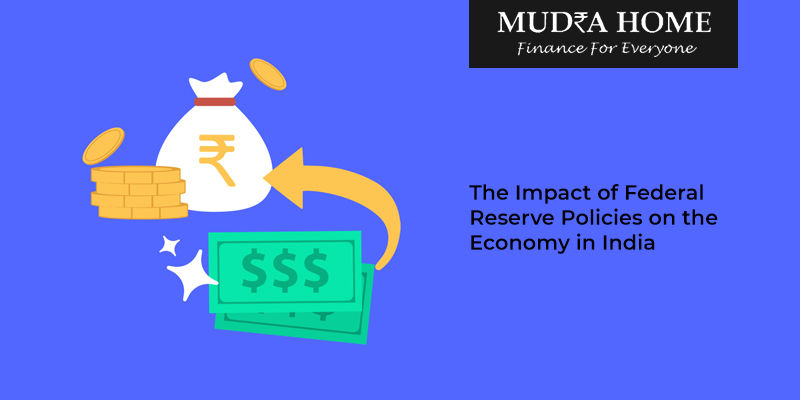
The Federal Reserve, often simply referred to as “the Fed,” is the central banking system of the United States. Although it operates within the United States, its policies and actions have far-reaching consequences for economies worldwide, including India. The Fed’s decisions on interest rates, money supply, and other monetary policies can significantly impact the global economic landscape. In this blog, we will explore the influence of Federal Reserve policies on the Indian economy and the various channels through which this influence is exerted.
Monetary Policy and Interest Rates
One of the most direct ways the Federal Reserve affects the Indian economy is through its control of interest rates. The Fed’s monetary policy decisions can lead to fluctuations in global interest rates, particularly in the case of the U.S. dollar. When the Fed raises interest rates, it becomes more attractive for investors to hold U.S. assets, which can lead to an outflow of capital from countries like India. In response, the Reserve Bank of India (RBI) often needs to adjust its own interest rates to maintain stability in the domestic economy.
The exchange rate between the Indian Rupee and the U.S. Dollar is another critical factor impacted by changes in the Federal Reserve’s monetary policy. When the Fed tightens its monetary policy, the value of the U.S. dollar tends to rise. A stronger dollar can make Indian exports more expensive, potentially leading to a decrease in demand for Indian goods and services in the international market. This can adversely affect India’s trade balance.
Inflation Control
Inflation is a primary concern for both the Federal Reserve and the RBI. The Fed uses its monetary policy tools to keep inflation in check, often targeting a specific inflation rate. When the Fed raises interest rates to combat inflation, it can indirectly influence inflation trends in India. Higher U.S. interest rates can attract foreign investment and capital outflows from emerging markets, including India. This can lead to a decrease in the money supply and, consequently, put downward pressure on inflation in India.
Investor Sentiment
Federal Reserve policy changes can significantly influence investor sentiment. Global investors closely watch Fed announcements, as they can signal changes in the risk-return profile of investments. When the Fed embarks on a tightening cycle by raising interest rates, it may lead to a shift in investor preferences, diverting funds away from riskier assets like emerging market securities. This can have an adverse impact on India’s financial markets, causing stock market declines and currency depreciation.
Furthermore, changes in investor sentiment can impact foreign direct investment (FDI) and foreign portfolio investment (FPI) in India. When global investors are uncertain about the direction of the U.S. monetary policy, they may hesitate to commit capital to emerging markets. Consequently, India may experience fluctuations in FDI and FPI inflows, which can affect the overall stability of the economy.
Financial Markets and Capital Flows
Federal Reserve policies also influence the global financial markets and capital flows. For instance, the Fed’s large-scale asset purchases and other unconventional policies can lead to the creation of significant liquidity in global financial markets. This liquidity can find its way into Indian financial assets, leading to rising asset prices and potentially inflating asset bubbles.
However, the withdrawal of such policies by the Fed can have the opposite effect. As the Fed reduces its balance sheet or raises interest rates, it may prompt global investors to repatriate their funds to the United States. This can lead to a decline in capital flows to India and a potential tightening of credit conditions within the country.
The Federal Reserve’s policies have a substantial impact on the Indian economy through various channels, including interest rates, inflation, investor sentiment, financial markets, and capital flows. It is essential for the Reserve Bank of India to carefully monitor and respond to changes in the Fed’s policies to ensure the stability of India’s economy.
India’s policymakers and investors should remain vigilant and be prepared for potential spillover effects from the United States, as the Fed’s decisions continue to exert their influence on the global economic landscape. While India has developed its own set of tools and strategies to manage its economic stability, the interconnectedness of the global economy means that events in the United States, particularly those orchestrated by the Federal Reserve, continue to play a crucial role in shaping India’s economic fortunes.